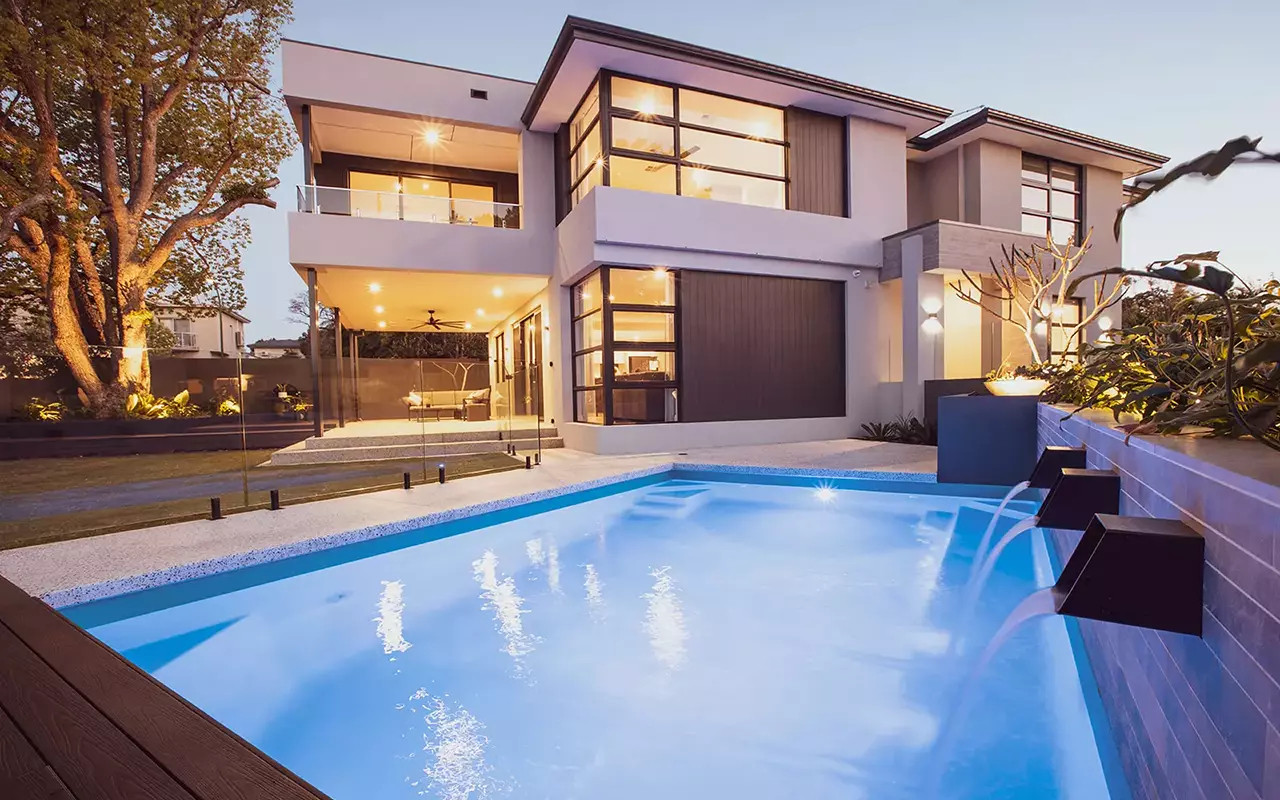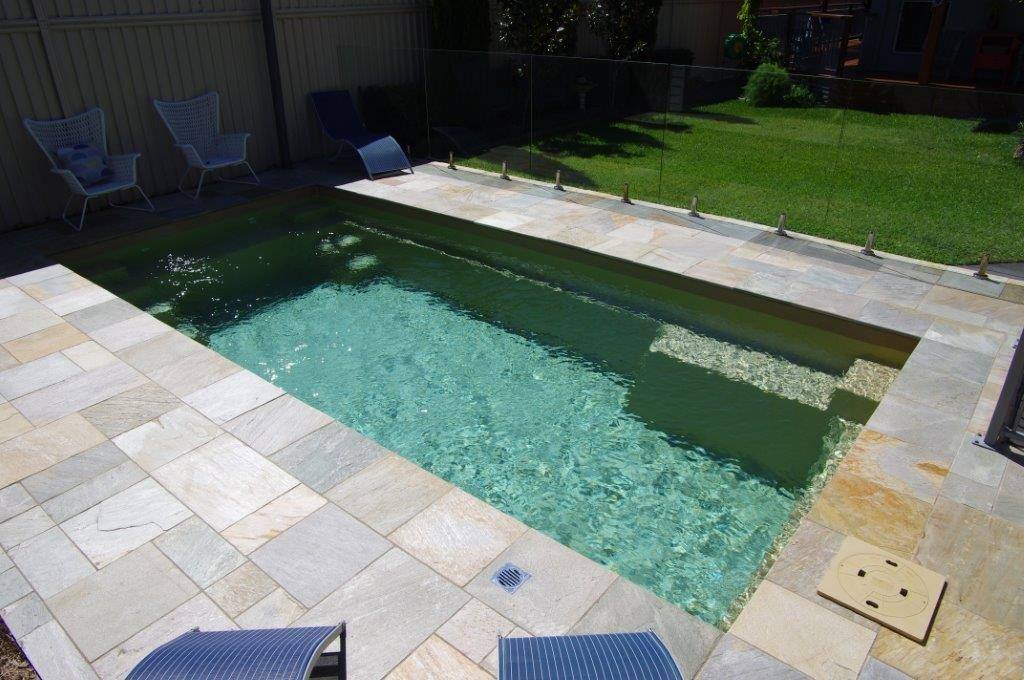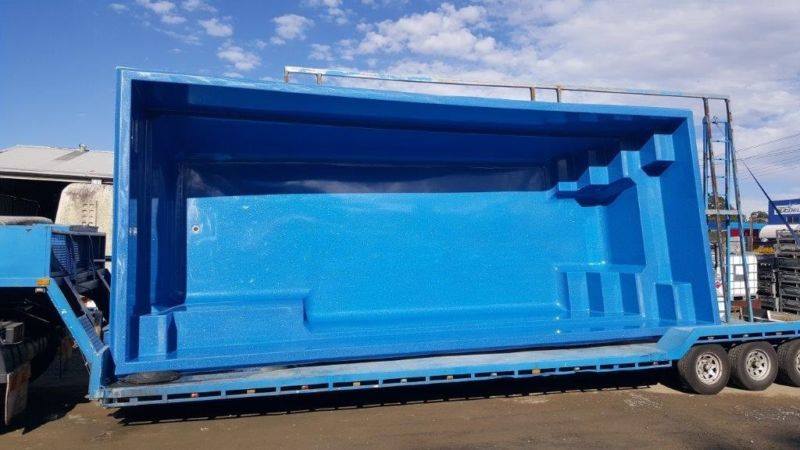

Building a plunge pool can be a fun and rewarding DIY project that will provide you with a relaxing oasis in your backyard. To get started, you'll need to gather all the necessary materials.
First and foremost, you'll need a sturdy and durable pool liner to hold the water in place. This can be made of vinyl, fiberglass, or concrete, depending on your preference and budget. You'll also need a filtration system to keep the water clean and free of debris.
Next, you'll need a pump and piping system to circulate the water through the filtration system. Additionally, you'll need a heater if you want to enjoy your plunge pool year-round.
To create the structure of the pool, you'll need bricks, concrete blocks, or treated lumber for the walls. You'll also need cement or mortar to secure everything in place.
Finally, don't forget about finishing touches such as tile or stone for the pool deck, lighting for nighttime swims, and landscaping around the pool area.
With these materials in hand, you'll be well on your way to building your very own DIY plunge pool. So roll up your sleeves and get ready to enjoy hours of relaxation and rejuvenation in your new backyard oasis.
Embarking on a DIY plunge pool project requires thorough planning and consideration. Here’s a detailed guide to help you navigate the process from concept to completion.
Assess Your Space: Before anything else, evaluate the space you have available. Consider how the plunge pool will fit with the existing layout of your garden or patio. It’s crucial to ensure there's enough room for construction without disrupting other elements of your outdoor area.
Choose the Right Kit: Select a plunge pool kit that suits your space and meets your aesthetic preferences. Kits vary in terms of size, shape, and included features. Research different manufacturers to find a quality kit that fits within your budget.
Permit and Regulations: Check with your local council or governing body to understand the regulations and permits required for installing a plunge pool. This step is critical to ensure your project is compliant and avoids legal issues.
Gather Materials and Tools: Although your kit will include the primary components, you may need additional materials such as concrete for the base, plumbing supplies, or decorative elements. Make sure you have all the necessary tools and equipment for the installation.
Installation Process: Follow the instructions provided with your plunge pool kit closely. The general steps will involve preparing the site, laying a foundation, assembling the pool, setting up plumbing and filtration systems, and adding any desired features like lighting or jets.
Finishing Touches: Once the pool is installed, focus on the surrounding area. Landscaping, decking, and furnishing around your plunge pool will complete the project and create a cohesive and inviting outdoor space.
Safety Measures: Ensure your DIY plunge pool is safe, especially if you have children or pets. Consider installing fencing or a pool cover to prevent accidents.

Regularly inspecting and maintaining any accessories or added features, such as lights or heaters, is crucial for ensuring the longevity and functionality of a plunge pool kit.. These small but important components are often overlooked but play a significant role in the overall performance of your pool. Lights provide not only aesthetic appeal but also safety during evening swims.
Posted by on 2024-11-25

Setting up a plunge pool kit involves several installation processes to ensure that your pool is properly assembled and ready for use.. One of the first steps in setting up a plunge pool kit is to prepare the area where the pool will be placed.
Posted by on 2024-11-25

Transforming your backyard with a plunge pool kit can truly turn your outdoor space into a relaxing oasis.. Imagine enjoying the summer days lounging by the cool waters, surrounded by lush greenery and the peaceful sounds of nature. With a plunge pool kit, you can easily create a stylish and functional water feature that will enhance the beauty and value of your home.
Posted by on 2024-11-25

So, you've finally taken the plunge and decided to install a plunge pool kit in your backyard.. Congratulations on unleashing your inner DIYer!
Posted by on 2024-11-25
| Neerabup Perth, Western Australia | |||||||||||||||
|---|---|---|---|---|---|---|---|---|---|---|---|---|---|---|---|
 Agricultural land on Wattle Avenue | |||||||||||||||
 | |||||||||||||||
| Coordinates | 31°41′28″S 115°46′37″E / 31.691°S 115.777°E | ||||||||||||||
| Population | 112 (SAL 2021)[1] | ||||||||||||||
| Postcode(s) | 6031 | ||||||||||||||
| Area | 34 km2 (13.1 sq mi) | ||||||||||||||
| Location | 36 km (22 mi) from Perth CBD | ||||||||||||||
| LGA(s) | City of Wanneroo | ||||||||||||||
| State electorate(s) | Mindarie | ||||||||||||||
| Federal division(s) | Pearce | ||||||||||||||
| |||||||||||||||
Neerabup is a rural locality in Perth, the capital of Western Australia, within the local government area of the City of Wanneroo.
Prior to European settlement, the Noongar people had lived in the area for more than 40,000 years, taking advantage of the abundant food and water around the chain of wetlands on the coastal plain. In winter, they moved eastwards away from coastal weather, to return in summer as inland supplies dried up. The Mooro people (led by elder Yellagonga during the early years of European settlement) stretched from the Moore River near Guilderton to what is now the Perth central business district, and used to move between Lakes Joondalup, Neerabup and Yanchep.
In 1865, European settlers established the Aboriginal tracks as a stock route from Dongara to Fremantle, travelling along the west side of the lakes. Lake Neerabup was first recorded by surveyor J. Cowle in 1867, the name being a Noongar word which possibly means "swampy place" or "small basin". The part of the stock route between Joondalup and Yanchep is now part of the Yaberoo Budjara Heritage Trail, part of the Bicentennial Heritage Trails Network established in 1988.[2]
The area was often spelled Neerabub, especially by postal and telecommunications authorities, until as recently as the 1960s. It was approved as a suburb name in 1982.[3]
Neerabup is bounded by Wattle Avenue to the north, the Mitchell Freeway to the west, Pinjar Road to the east and Flynn Drive and Burns Beach Road to the south.[4]
Neerabup's population was not measured at the 2001 Australian census.[5]
Neerabup is a sparsely populated agricultural suburb. Several plant nurseries, a fruit and vegetable shop at Menchetti Road and the Neerabup Lake wetland are situated along Wanneroo Road. The western strip between Wanneroo Road and the proposed Mitchell Freeway is approximately the southern half of the Neerabup National Park. The area also contains a golf course, small wineries, a small industrial area on Flynn Drive and several sand and limestone quarries.
Neerabup is home to the Wanneroo Raceway, a 2,411-metre (1.498 mi) road racing circuit. Wanneroo Raceway, which opened in 1969, is the home of motor racing in Western Australia and hosts an annual round of the Supercars Championship.
Neerabup is also home to the Pinjar Park Speedway which opened in 2005. Pinjar Park is a 142-metre (155 yd) Motorcycle speedway which regularly hosts national and international meetings and caters to both senior and junior solo and sidecar racing. Pinjar Park is considered small for a speedway in Australia, with most tracks around the country ranging from 350 metres (380 yd) to 600 metres (660 yd) in length. For the bikes, the speedway replaced the old 550-metre (600 yd) Claremont Speedway which had run from 1927 until 2000, and the Bibra Lake Speedway which closed in 2004.
Neerabup is not served by public transport. The nearest Transperth bus service is the 391 between Joondalup train station and Carramar 2 kilometres (1.2 mi) to the south. These services are operated by Swan Transit.
Neerabup's political leanings are unclear due to its small size and the lack of a polling booth. The nearest large booths tend to favour the Australian Labor Party historically, although most have been won by the Coalition in recent times, especially at federal level.
Maintenance and operation requirements for DIY plunge pools are generally straightforward but will depend on factors such as water quality management, regular cleaning, and equipment upkeep.